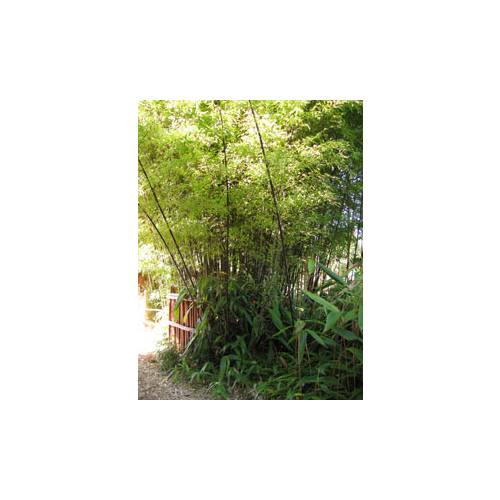
The growing of bamboo
Bamboos
- Details
-
Bamboos, these giant grasses are very much in fashion but not unanimously. They have beautiful leaves and canes but neither flowers nor fruits. It is therefore important to mix them in with other plants...
Before planting...
Bamboos can be divided into three categories: dwarf (do not exceed 1.20m when adult), medium (measure between 1.20m and 3m) and the giant types, which can exceed 10m in height given the right conditions. In a small garden, just one plant of the large variety of bamboo can take up all the available space! Therefore, choose your bamboo taking into account the maximum size that it can reach.
The other important thing for bamboos is the type of root system or underground runners that they have. These rhizomes propagate the clump and can end up spreading to areas that are several metres away. Rhizomes have no idea of property boundaries and can quite easily end up in your neighbour’s garden leading to disputes. Bamboos tend to spread more in dry rather than damp soil and more in sandy soil than clay. Bamboos of the type Fargesia do not form rhizomes: you can therefore plant these without any worry. They do not like full sun and are one of the few shade-loving bamboos. To sum it up they are perfect for a town garden !
At planting time
If it is a type with a spreading root system then firstly install some sort of barrier for its roots. This consists of a special type of felt that the rhizomes cannot penetrate to carry on their journey. Dig a hole that is big enough (at least 1.50m in diameter for a large species like the Phyllostachys) and cover the sides with an anti rhizome barrier, it should be 50cm deep. Add some well-rotted compost or a slow release fertilizer, as bamboos are very greedy feeders. Do not untangle the root ball; it is a waste of time and practically impossible to do! Both at the time of planting and during the first year water the bamboo copiously.
Looking after them
Whilst bamboos are establishing their roots, they need plenty of water and fertilizer. However, bamboos can tolerate a short-lived drought: their leaves will curl up and take on a more yellow colour than in the preceding weeks. If you did not install an anti rhizome barrier around the roots, you will need to contain the spreading runners that leave the main clump by cutting them off at ground level or even better by sectioning them at the point that they leave the main clump which will exhaust them. However, be careful not to break the young shoots, which are very fragile. It is also prettier to keep the base of the canes free of young shoots that are trying to grow by cutting them back to the stem. It is not however an indispensable task. - Photos (2)


